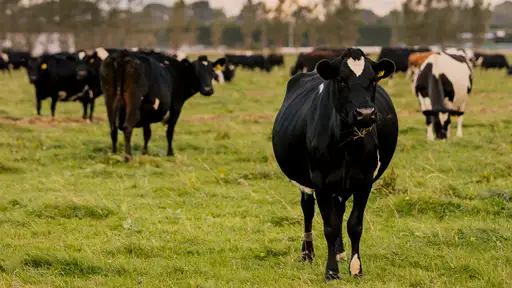Improving our business sustainability by measuring and reducing our greenhouse gas emissions and supporting our staff and suppliers to do the same, is an important part of our commitment to a greener tomorrow. We are committed to making improvements within our business to reduce emissions.
What we’re doing to improve business sustainability
We recognise the need for collective action on climate change and are undergoing some key initiatives to make sure we’re playing our part. Take a look at our latest Sustainability Report for more details about what we are working on as a company and how we're supporting the New Zealand dairy sector.
Our climate risks and opportunities
As a NZX listed company, LIC is a Climate Reporting Entity and reported under the External Reporting Board’s Climate-related Disclosure Framework from the 2023/24 reporting year.
Our emissions and energy
We first measured our emissions in the 2018 financial year (1 June 2018 – 31 May 2019). These measurements serve as our base year for all future emissions to be compared against.

Science- aligned emissions targets
LIC has previously set emissions reduction targets based on science-aligned methodologies using SBTi (Science Based Target initiatives) tools and guided by the biogenic methane emissions reduction target in the Climate Change Response Act 2002, with the intention of reducing our greenhouse gas emissions and contributing proportionately to the efforts to limit the global average temperature increase to 1.5°C above pre-industrial levels.
While we have been working hard on reducing emissions, targets previously set were not achievable given challenges with sufficient novel technology being available to achieve the targeted emissions reduction. The previous targets set also did not reflect LIC’s unique opportunity to assist the New Zealand dairy sector to reduce methane emissions intensity through genetic improvement. This opportunity has resulted in LIC increasing our trial animals and Scope 1 excreta Nitrous Oxide (N2O) and biogenic methane emissions for a period to conduct research and development to drive long-term reduction in methane emissions intensity reduction for the New Zealand dairy sector.
Scope 1 – Direct GHG emission sources
Direct emissions are generated by sources owned or controlled by us. For example, emissions from our fleet vehicles, and agriculture emissions from our farms.
Scope 2 – Indirect GHG emission sources
Indirect emissions are derived from the generation of purchased electricity that is used by LIC.
Scope 3 – Other GHG indirect emission sources
Other indirect emissions are derived from the activities that are carried out by us but from sources not controlled by us. For example, indirect emissions from staff vehicles used to travel to and from work.
Scope 1 – Biogenic methane
Scope 1 biogenic methane emissions are generated from enteric fermentation, manure from our cows and bulls, and from onsite wastewater treatment.
Scope 3 – Biogenic methane
Scope 3 biogenic methane emissions are generated from municipal wastewater treatment and waste.



